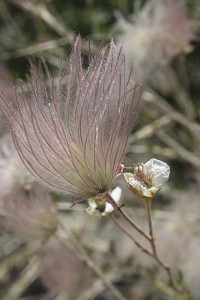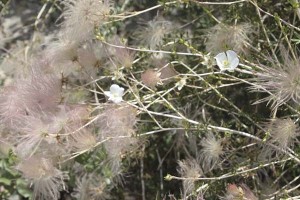 A plant that was a big hit with many of the bloggers who made it to Chicago for the recent Garden Bloggers Spring Fling was prairie smoke, Geum trifolium. I didn’t make it to Chicago, and I’ve never seen prairie smoke in person. But it looked like I’d have been as struck with it as all the bloggers who witnessed its terrific puffball seedheads in real life.
A plant that was a big hit with many of the bloggers who made it to Chicago for the recent Garden Bloggers Spring Fling was prairie smoke, Geum trifolium. I didn’t make it to Chicago, and I’ve never seen prairie smoke in person. But it looked like I’d have been as struck with it as all the bloggers who witnessed its terrific puffball seedheads in real life.
Photo to the right: Gary A. Monroe, US Forest Service [ source ]
The seedhead to the left, however similar it might appear, is not prairie smoke. Instead, it’s Apache plume, Fallugia paradoxa, the Southwest’s alternative to the Midwest’s puffball.
Flowers and seedpods are great ways to tell which plants are related. Just looking at the seeds you could probably guess that the two plants are related, with both of them belonging to the rose family. You can see the rose resemblance even more in the flowers in the following photo.
I photographed these ten days ago in the parking lot of Las Pilitas Nursery, where they were near their peak. If I had more space I might have brought some of these home with me…
The shrubs grow about four feet tall and a little wider, with whitish stems and narrow rosemary-like leaves. The Jepson Horticultural database states that Fallugia paradoxa “grows especially well in zones 14, 18, 19, 20, 21, 22, and 23 and also in zones 1, 2, 7, 8, 9, and 24.” No plant is perfect, unfortunately. The Native Plant Database of the Ladybird Johnson Wildflower Center gives you a heads-up: “It is good for erosion control because of drought-tolerance and aggressive seeding. It can, however, become too aggressive in optimum conditions.”
All those cool seeds must go somewhere.


